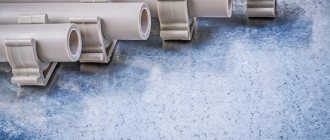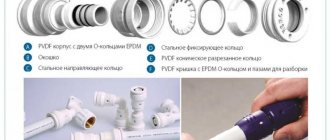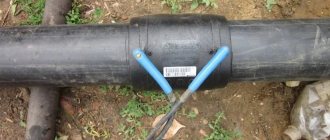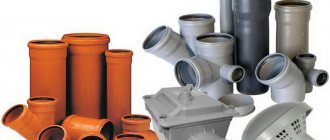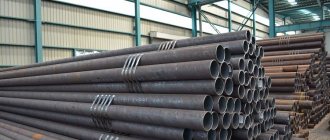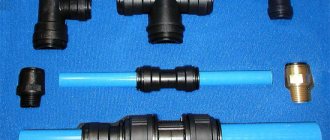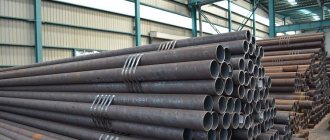Polypropylene is a white solid, a product of the polymerization of propylene and belongs to the class of polyolefins. Simply put, it is a plastic polymer with a wide range of applications. Today it is the most popular modern plastic due to its excellent consumer properties and versatility of use.
The material is obtained from propylene, whose formula is C3H6, as a result of the reaction between propene and a Ziegler-Natta catalyst. Thus, its chemical formula looks like this – (C3H6)*n. Today there are several varieties of this substance, they all have the same formula, but differ in spatial structure: isotactic, syndiotactic, atactic.
Each of them has its own physical and chemical properties. For example, an atactic polymer is characterized by fluidity and a low melting point, while an isotactic polymer, on the contrary, is elastic and dense and melts at 170 degrees Celsius.
Heat transfer of polypropylene pipes
regarding the cooling of water in the pipes.
Thermal conductivity of polypropylene pipes.
Let's look at the definition:
Thermal conductivity
is the transfer of heat by structural particles of a substance (molecules, atoms, electrons) during their thermal motion.
Such heat exchange can occur in any body with a non-uniform temperature distribution, but the mechanism of heat transfer will depend on the state of aggregation of the substance. The phenomenon of thermal conductivity is that the kinetic energy of atoms and molecules, which determines the temperature of a body, is transferred to another body when they interact or is transferred from more heated areas of the body to less heated areas. Sometimes thermal conductivity is also called a quantitative assessment of the ability of a particular substance to conduct heat. The numerical characteristic of the thermal conductivity of a material is equal to the amount of heat passing through a material with a thickness of 1 m and an area of 1 sq.m per hour with a temperature difference on two opposite surfaces of 1 K.
GOST 26996 - 86 Polypropylene Technical conditions Polypropylene and copolymers of propylene. This standard applies to polypropylene obtained by the polymerization of propylene, and copolymers obtained by the copolymerization of propylene and ethylene in the presence of organometallic catalysts at low and medium pressure. Polypropylene and propylene copolymers are intended for the production of film, fiber, pipes, technical products and consumer products. The indicators established by this standard are provided for the highest and first quality categories. Polypropylene and propylene copolymer are produced for the needs of the national economy and for export. The standard does not apply to polypropylene for capacitor film.
Properties of polypropylene
| Indicator name | Indicator value |
| 1. Thermal conductivity coefficient, W/m oC | 0,16-0,22 |
- The plate shows that the thermal conductivity coefficient of polypropylene is very low (comparable to the thermal conductivity coefficient of fresh snow (!), which, according to WIKIPEDI, is 0.10-0.15 W/(m K) or skin - 0.14÷ 0.16 W/(m K). In turn, the coefficient of carbon steel, for example, is much higher - 47 W/(m K), alloy steel - 13÷48 W/(m K), stainless steel - 16÷26 W/(m K).
- Regarding the water temperature in the pipes: standards (in particular, SNiP 2.04.01-85 * “Internal water supply and sewerage of buildings”) regulate only the water temperature at the points of water collection: “a) not lower than 60 ° C - for centralized hot water supply systems, connected to open heat supply systems; b) not lower than 50°C - for centralized hot water supply systems connected to closed heat supply systems; c) not higher than 75°C - for all systems specified in subparagraphs |a" and |b". 2.3. In the premises of preschool institutions, the temperature of hot water supplied to the water fittings of showers and washbasins should not exceed 37 ° C,” the inlet temperature d.b. about 55-60°C. The standards do not stipulate how long after opening the tap the hot water must reach the standard temperature.
Problems with hot water can have two causes (or two manifestations):1. Due to a dead-end hot water system, hot water on the upper floors does not start flowing immediately.
2. Due to the fault of the heat supplier (heating networks), hot water is not hot water when it enters the house.
The first problem can be solved by reconstructing the heat and water supply system of the house, organizing the circulation of hot water. That is, hot water constantly “spins” through the pipes, and when we open the tap, we immediately get it hot. But it seems to me that the costs of such a reconstruction will make residents think: maybe, well, it’s better to drain warm water and pay for it using a “hot” meter?


